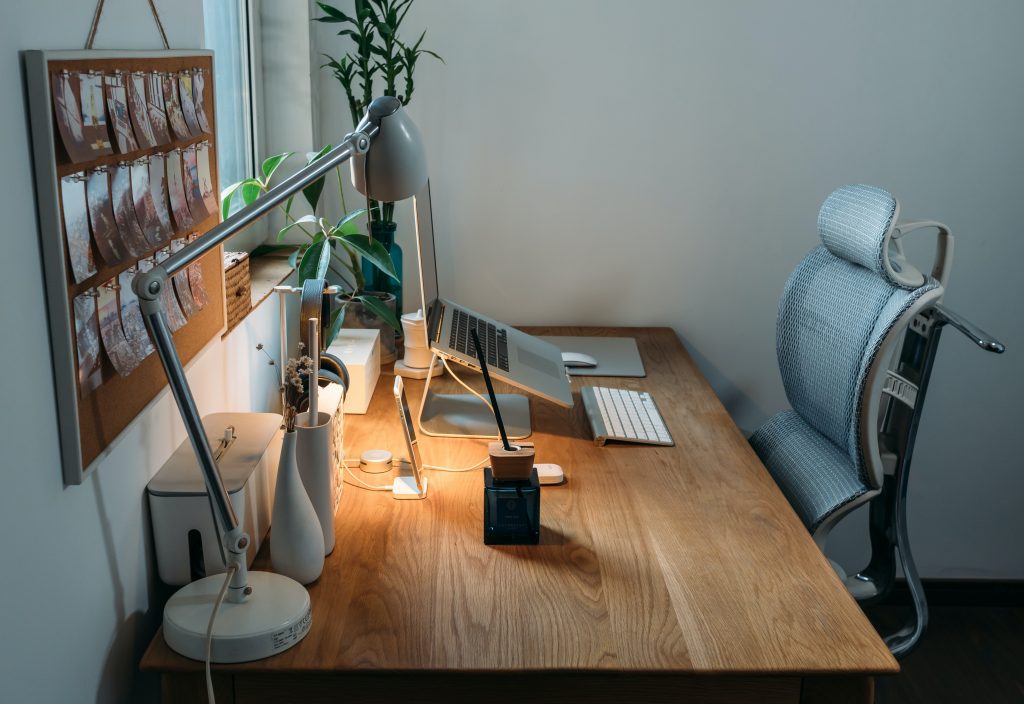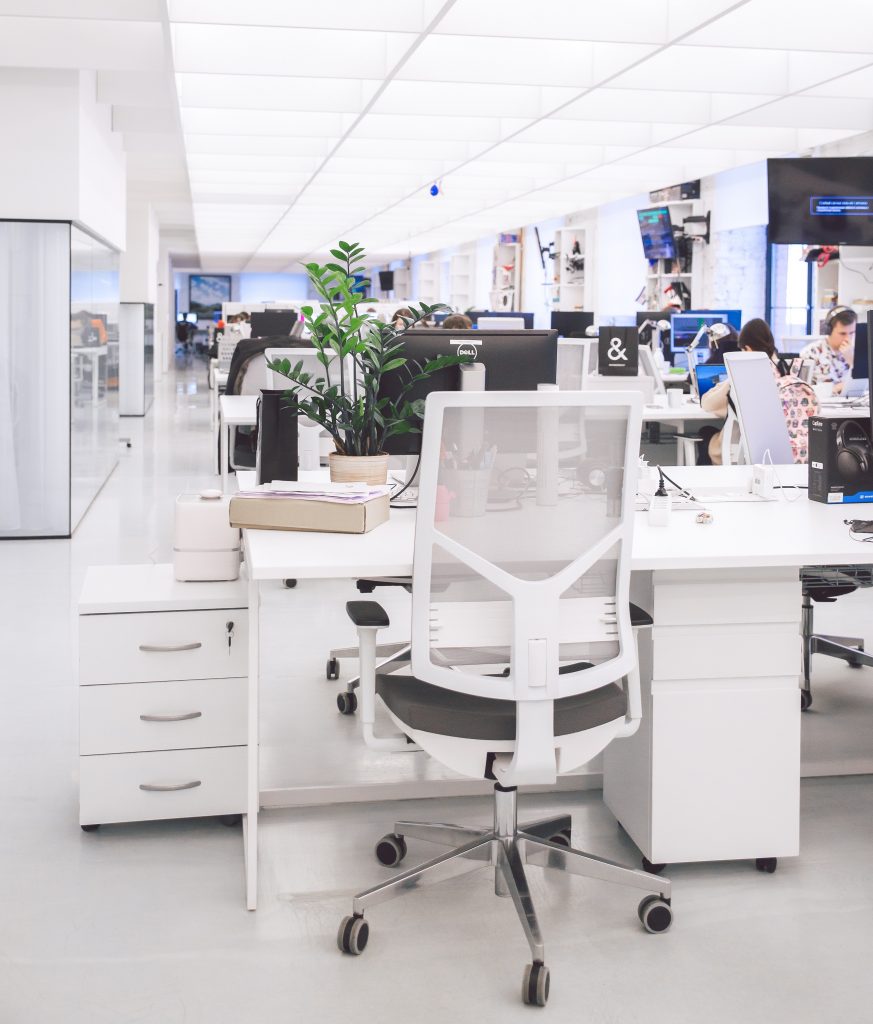Most of the time, you don’t realize until years later that you haven’t been sitting ergonomically correct at your workstation the whole time. This can manifest itself in back pain and other health problems, which is why you should take action against it early enough. As people increasingly work or practice their hobbies while sitting, it is very important to pay attention to ergonomics at the workplace. This promotes concentration, prevents illness and makes work easier.
Why is ergonomics important in the workplace?
A normal workplace basically consists of a table, an office chair and a PC to work at. However, it is not as simple as it may sound. Especially if you want to support your body during a long period of sitting and not strain it.
After all, even an incorrectly adjusted office chair can cause back pain, neck pain, and headaches in the long run, as well as bring with it a whole lot of other health problems. That’s why it’s incredibly important to make sure that the workplace is ergonomically set up correctly and supports the body at work instead of harming it.
This still requires only a table, a chair and a PC, but in the right sizes and distances. It is not necessary to buy new furniture, because it may be enough to align it correctly to the user.
However, there are also various improvements in the area of computer hardware, because the monitor, mouse and keyboard should also be ergonomic accordingly. What can the whole thing look like? We have summarized it for you here.

Definition of ergonomics
According to the Merriam-Webster dictionary, ergonomics is defined as “an applied science concerned with designing and arranging things people use so that the people and things interact most efficiently and safely”.
It is also referred to as “the design characteristics of an object resulting especially from the application of the science of ergonomics”.
This makes ergonomics an important science, but one that is often overlooked, especially in the home workplace.
However, in times when the home office is becoming increasingly important, the home workspace should also follow the very rules that ensure an ergonomic workplace.
Ergonomics is composed of the Greek word “ergon” for work and “nomos” for law or rule.
The legal situation
While laws in Germany cover exactly what obligations an employer has to its employees regarding an ergonomic workplace, this is not legally mandatory in the United States.
However, the Occupational Safety and Health Act recommends that employers “implement effective programs and measures to reduce ergonomic hazards and associated MSDs where necessary”.
There is also a guideline for minimizing injuries, which is, however, only to be complied with voluntarily.
According to the guideline, employers “are responsible for providing a safe and healthful workplace for their workers. In the workplace, the number and severity of MSDs resulting from physical overexertion, and their associated costs, can be substantially reduced by applying ergonomic principles.”

The ergonomic workplace – a guide
Setting up an ergonomic workplace is not difficult, as long as you pay attention to a few things. Especially before buying new furniture, you should take a close look at which tables and office chairs are suitable for an ergonomic workplace. Meanwhile, there are already good products for a small price.
Office chair
If we already work all day mostly sitting, the corresponding office chair should also be comfortable, but still give our back a good stability. Therefore, it is important that the office chair can first be adjusted in height and the backrest should also be adjustable. This allows the office chair to be optimally adjusted to the body of the individual user. In addition, it should also be possible to adjust the armrests as well as the seat, so that the office chair can adapt even better to the user.
Care should be taken to ensure that the feet are fully planted on the floor and the thighs and calves form a right angle in a straight sitting position. The thighs and back should also form a right angle so that a correct sitting posture can be maintained.
Desk
A desk at which you work permanently should have a certain size, width and depth, so that, of course, all the important utensils find space on it. But there should also be enough space so that you have an appropriate distance from the screen. In addition, you should be able to place your forearms horizontally on the desk in a sitting position. There should also be enough legroom without bumping into any cables under the desk.
A far-reaching recommendation is a height-adjustable desk at which you can also work while standing. This allows you to move more during work and relieves your back in the meantime, so you can significantly reduce the risk of getting or aggravating back pain. Standing also promotes concentration, prevents fatigue and thus improves health in the long term.
Furthermore, small monitor stands can help to find the right height for the screen, should it not be possible to adjust the height accordingly.
Adjust monitor correctly
Of course, in addition to the furniture, the monitor should also be correctly adjusted so that the neck does not become stiff in the long run or you pull a muscle. An incorrectly aligned monitor can lead to serious posture problems in the long run. In most cases, an ergonomic adjustment can be achieved with a few simple steps, but it’s best to find out whether the monitor can be adjusted ergonomically before you buy it.
The top edge of the monitor should be at about eye level and the screen should be about an arm’s length from the user.
Monitors are now available in many different sizes, but it has been scientifically proven that you work more than 35% more effectively, especially with a second or even third monitor. A screen size of 19 inches is sufficient in this case, but with only one monitor the size should be at least 22 inches. Depending on the workspace, it is of course worth buying an ultrawide monitor to combine the workspace of two or three monitors into one.
An ergonomic screen should be able to tilt, rotate, as well as adjust in height. This ensures that it is always optimally aligned to the user. A straight view from above is crucial, as otherwise an incorrect posture can quickly occur. This can also be remedied by corresponding wall or table mounts, which can be adjusted even better to the user, depending on the model.
Take a look at this video by the Wall Street Journal to see how to set up your desk ergonomically.
Ergonomic mouse and keyboard
Not only furniture and monitors are becoming more and more ergonomic, but also mice and keyboards, without which most work on the PC would not even be possible. When it comes to ergonomic posture, however, most people initially only think of the back, but the hands, which operate the mouse and keyboard all day, should also be relieved as much as possible. Therefore, it is important to use ergonomically correct hardware here as well.
Mouse
A normal mouse serves its purpose at most workstations, but it permanently forces the wrist into an unnatural position. An ergonomically correct mouse supports the natural posture of the wrist, which significantly relieves it.
Most ergonomic mice are also suitable for use in the office and home office. In addition, there is also a large selection of ergonomically correct gaming mice, so that the wrist is also relieved as much as possible when gaming.
The special shape of the ergonomic mice makes it possible and it takes a short time to get used to the change. After longer use, however, you quickly notice that the wrists are much more relaxed.
Keyboard
Ergonomic keyboards are still very rarely found in the workplace, but they also support the natural posture of the hands through their special shape. Because a permanently unnatural posture puts the wrong strain on many different muscles, tendons and joints, which can quickly lead to tension and pain.
Gamers get their money’s worth here as well, since there are also ergonomic keyboards with RGB lighting, and especially for eSports, a keyboard has to be built differently than for casual gaming.
The curved shape of ergonomic keyboards make it possible that the wrist is bent less and thus supported much better. There are even keyboards that can be split in the middle to adapt them even better to the respective user.
Office space, light and air conditions
An ergonomic workplace already does a lot to promote health. However, the working environment also plays a major role. Various things can help here, which is why we have created a small checklist.

- There should be sufficient working space available per workstation
- approx. 10m² per workstation
- The humidity should be 40 – 60%
- Regular ventilation provides fresh oxygen
- Distribute large-leaved plants in the office, which naturally improve air quality
- Set up humidifiers, which can even be enriched with appropriate fragrances
- The noise level should be kept as low as possible
- So-called noise-canceling headphones can help here
- Natural daylight is the best lighting
- Use as little artificial light as possible
- Direct lighting should be avoided
- To additionally increase concentration, small exercises for the back, neck or shoulders can help, which can already be done comfortably at the workplace.
- Shoulders circling
- Massage temples
- Turning the upper body to the left and right while seated
- Getting up and moving around a little bit on a regular basis
Even small improvements pay off
Especially in the home office, many people are put off by the idea of setting up an ergonomically correct workstation. After all, ergonomics is associated with expensive furniture and expensive hardware, but this is not always the case.
Even small things like raising the monitor can already help alleviate back pain if the office chair and desk are already well adjusted. These stands are usually relatively inexpensive, but can make a huge difference.
Office furniture that is adjustable is also becoming increasingly affordable and an investment in health is worth every penny. The most important thing is and remains regular exercise, and if the workplace allows it, even a walk during the lunch break helps to mobilize the back after hours of sitting.
Otherwise, employers are required by law to provide their employees with appropriate workstations so that they can stay with them for a long time. After all, back pain is one of the most common reasons for sick leave after infections. Such problems, which may be long-term, can be wonderfully circumvented with ergonomics.




